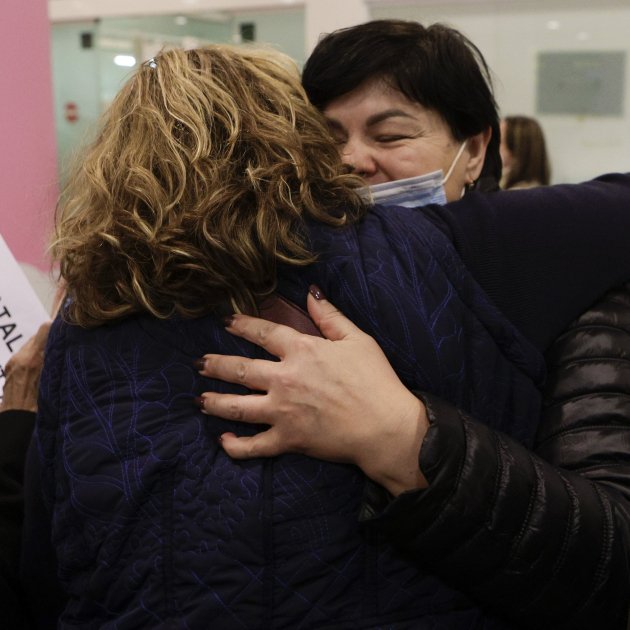Barcelona, Alicante and Madrid will be the three key centres in the Spanish state where all Ukrainian citizens fleeing the war will be welcomed. In the case of the Catalan capital, two possible locations for the reception centre are being considered, with the options still unknown and the final decision yet to be made. Nor is it ruled out that the centre will be close to a hotel complex to provide further space if necessary. The Spanish minister for inclusion, social security and migration, José Luis Escrivá, gave the first details of this proposal this Monday and warned that the number of arrivals will be massive: "Now, already Ukrainians who have family in Spain have arrived, there are about 130,000 [Ucrainian residents in Spain] and from this first wave, people who are leaving the country spontaneously and take advantage of family ties.The number I think is relatively limited at the moment. We have an extraordinary challenge from a humanitarian and reception point of view, we do not know the volume but we must be prepared", he said in statements to Spanish public broadcaster RNE. The total capacity in the three centres will be for over 6,000 people.
Three centres in Barcelona, Alicante and Madrid
The centre in the Community of Madrid will be located at Pozuelo de Alarcón in a Social Security training space, and the one in Alicante has also been located taking into account the proximity to Murcia where there is "an area of concentration of Ukrainians". Escrivá explained that it is also important that the Alicante airport is close by, and expressed his gratitude to the government of the Valencian Country for making available a location at the Ciutat de la Llum, a movie production complex that cost more than 500 million euros, left vacant after the failure of the investment. Escrivá underlined the unity of direction that all the administrations involved have in terms of the reception of Ukrainians - both the Autonomous Community governments and town councils. The mayor of Barcelona, Ada Colau, also made a statement on similar lines: "Barcelona is ready". She also called on the public to reconsider its attitudes to humanitarian aid and made a call to "put things in order" and work with NGOs that are present in the warzone.
However, these three centres are intended to be the first contact when refugees arrive. "It is not a question of locations but to create a centre for reception and initial welcoming, carrying out documentation processes, ensuring that they know their rights and what we will do for them via an interview to know their needs and refer them to those most appropriate resources". Currently, work is also being carried out jointly with the family networks of Ukrainians in Spain, the embassy and NGOs. Escrivá also stressed "the great offer and the huge list of volunteers out there." The management of this new wave of migration is very different from previous waves, even compared to the last one, which was last summer with arrivals from Afghanistan. A key aspect is that, for the first time, a 2001 European Union directive on the matter has been approved by the European Council. It establishes that all those who want to leave the war zone should have a framework for accessing the EU, including such areas as access to employment, international protection from the outset, and immediate assistance.
The EU's "temporary protection"
These elements are included in what is called "temporary protection", an emergency mechanism that can be applied in case of mass influxes of people, and which aims to provide immediate and collective protection (that is, without having to study each application individually) to displaced people who do not have the conditions to return to their country of origin. The aim is to ease the pressure on national asylum processes and enable displaced people to enjoy rights that are harmonized across the EU. These rights include residence, access to the labour market and housing, medical care and access to education for minors.
Once adopted, the decision activate temporary protection for an initial period of one year. This period can be automatically extended for half-yearly periods up to a maximum of a second year. Thus, the European Commission may propose to the Council that the temporary protection could be extended for up to one more year, or it may also propose that temporary protection be terminated if the situation in Ukraine allows for a safe and lasting return.
